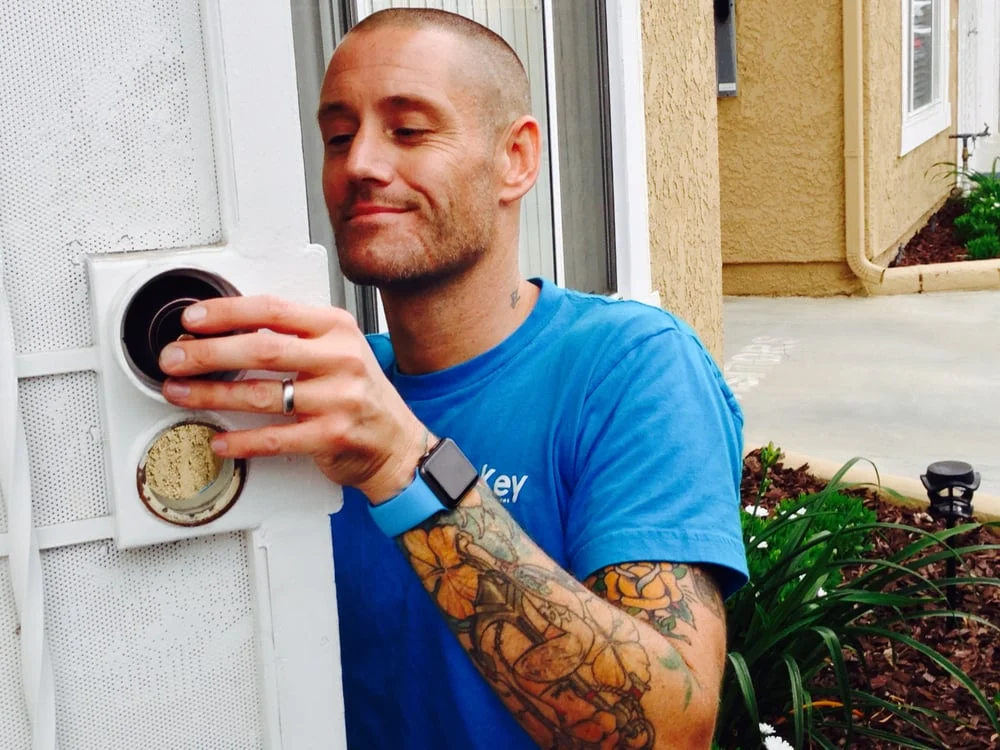Returning home after a long day, only to worry about your front door security, can be stressful. Many homeowners realize their current locks may be outdated or insufficient for modern security needs. Choosing a reliable lock helps protect your home and family, but with so many options, it can feel overwhelming.
Finding the right balance between security, usability, and design is essential. With the right guidance, you can select a lock that ensures peace of mind while complementing your home’s aesthetics. From deadbolts to smart locks, understanding the best features and practices helps prevent vulnerabilities and provides lasting protection.
Understand Different Types of Front Door Locks
Selecting the appropriate lock type is the first step to improving your home lock safety. Different locks offer varying levels of security and convenience, so knowing the options is crucial.
Deadbolt Locks
Deadbolts are widely regarded as the most secure option for residential doors. They extend deep into the door frame, making forced entry more difficult.
- Single Cylinder: Key outside, thumb turn inside; ideal for standard doors.
- Double Cylinder: Requires a key on both sides; suitable for doors with glass panels.
- Benefits: High security, durable, and resistant to tampering.
Smart Locks
Smart locks offer modern convenience, often integrating with home automation systems. They reduce dependency on traditional keys while maintaining security.
- Keyless Entry Solutions: Unlock via phone, keypad, or fingerprint.
- Remote Access: Monitor and control your lock from anywhere.
- Advantages: Easy for multiple users, temporary access codes, and automated locking.
Lever Handle and Knob Locks
While lever handles and knob locks are common, they are best combined with deadbolts for maximum security.
- Lever Handles: Ergonomic, easy for elderly or children.
- Knob Locks: Simple design, often decorative, less secure alone.
Evaluate Security Features
Home lock safety is more than just choosing a sturdy lock. Effective locks resist picking, drilling, and other tampering attempts.
Security Grading Systems
- Grade 1 offers the highest level of residential security.
- Grade 2: Suitable for standard homes with moderate security needs.
- Grade 3: Basic residential protection.
Material Quality
Locks made from solid steel, brass, or bronze offer longevity and resistance to forced entry.
- Reinforced strike plates add additional security.
- Anti-pick pins prevent unauthorized access.
Aesthetic and Functional Considerations
A lock should not only protect but also complement your home. Matching finishes and ergonomic design enhance usability and style.
- Finish Options: Matte black, satin nickel, antique brass.
- Design Harmony: Choose a style that integrates with your door and entryway.
- Ergonomics: Ensure ease of operation for all family members.
Door Lock Installation Guide
Correct installation is critical for effective security. Improperly installed locks reduce protection, even if you choose high-quality hardware.
DIY vs Professional Installation
- DIY: Suitable for standard locks with clear instructions.
- Professional: Recommended for complex smart locks or reinforced deadbolts.
Installation Tips
- Measure door thickness to ensure compatibility.
- Reinforce door frames and strike plates for added protection.
- Test locks thoroughly after installation to confirm functionality.
Keyless Entry Solutions and Smart Integration
Modern homes benefit from keyless entry solutions that improve convenience without compromising security.
- Biometric Access: Fingerprint recognition for multiple users.
- Temporary Codes: Grant access to visitors or service personnel.
- App Integration: Monitor lock status, receive alerts, and manage multiple locks remotely.
Benefits of integrating smart locks:
- Streamlined access for family members.
- Quick response in emergencies.
- Reduced risk of lost or copied keys.
Lock Selection Tips
Choosing the best lock for your front door involves more than purchasing the first option available. Consider your neighborhood, door material, and family needs.
Evaluate Home Environment: High-risk areas may require grade 1 deadbolts or reinforced smart locks.
Avoid Common Mistakes: Do not rely solely on price; balance cost with durability and features. Consider ease of use for all residents and account for maintenance requirements.
Regular Maintenance: Lubricate lock mechanisms, check battery levels for smart locks, and inspect strike plates periodically to maintain safety and functionality.
Frequently Asked Questions
Q1: Which lock is most secure for a front door?
A1: Grade 1 deadbolts are the most secure, offering resistance to picking, drilling, and forced entry.
Q2: Can smart locks replace traditional deadbolts?
A2: Yes, smart locks offer convenience and security, but combining with a deadbolt provides added protection.
Q3: How often should I maintain my front door locks?
A3: Lubricate locks every six months, and replace batteries for smart locks as recommended.
Q4: Are keyless entry locks safe for families?
A4: Yes, they offer controlled access, temporary codes, and monitoring via apps, enhancing home security.
Q5: Should I hire a professional to install a smart lock?
A5: Professional installation ensures proper fit and function, especially for complex locks or reinforced doors.
Final Thoughts: Secure Your Home with Confidence
Choosing the best lock for your front door is essential for home safety and peace of mind. By evaluating lock types, security features, and installation practices, homeowners can protect their family and property effectively. Incorporating smart locks, keyless entry solutions, and residential lock options ensures convenience without sacrificing security. A thoughtfully selected lock enhances both safety and the aesthetic appeal of your home.
Protect Your Home Today
Upgrade to the best lock for your front door now. Explore top-rated options that combine strength, convenience, and modern design to safeguard your home effectively. Ensure your family’s security starts at the entrance.


